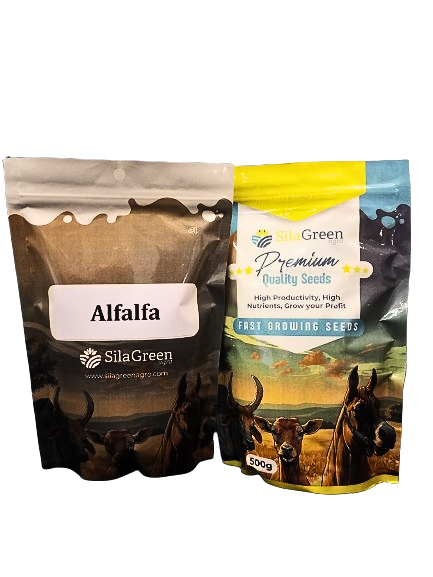Description
Known as: Crioula Alfalfa
Scientific name: Medicago sativa L.
Family: Leguminosae
Kg per hectare: 15 kg
Origin: Plant originating in Southeast Asia, which gives it basic characteristics of a temperate climate plant.
Utilities: Hay production and possibly grazing.
Growth: Free growth up to 1.0 m and its growth form is creeping.
Breaking dormancy: Does not present dormancy.
Germination time: 5-10 days.
Perennial legume, due to the quality of the forage produced, it is considered the Queen of Forages. An erect plant, extremely demanding on soil fertility, it requires corrected, deep, well-drained soil with high levels of organic matter. Recommended for green cutting, hay or silage, the Crioula cultivar, originally from Rio Grande do Sul, is today the best adapted to hot tropical regions of Brazil, thus being the only one to be recommended for cultivation. Produces 14 to 24 tons. dry matter/ha/year, this production being distributed over 7 to 9 cuts throughout the year.
Growth Form: Erect;
Height: Up to 1.0 m;
Digestibility and Palatability: Excellent;
Number of Cuts: 7 to 9 with irrigation;
Drought and Cold Tolerance: Low / High;
Crude Protein in Dry Matter: 22 to 25%;
Vegetative Cycle: Perennial;
Dry Matter (hectare/year): 18 to 20 tons;
Nitrogen fixation (hectare/year): 127 to 333 kg of N;
Annual Precipitation: Above 700mm;
Use: Grazing, green forage, hay and silage.
Planting:
Planting Depth: 1 to 2 cm;
Spacing: 15 to 30 cm;
Density: 15 to 20 kg per hectare;
Plants per linear meter: 140 to 150.


